« China Part 5 -- Terra Cotta Warriors | Main | Island Tour »
August 21, 2006
China Part 6 -- Xi'an people and places
Our final day in Xi'an was a whirlwind trip all over the area. We stopped by hot springs, palaces, old hotels with historical significance, a muslim mosque, and lots of people everywhere.
First up was an old hotel located at a hot springs right outside of Xi'an. Inside there was a small museum that showed what the area looked like in ancient times, since the hot springs were a favorite retreat location for emperors.
Here's what one of the royal families may have looked like.
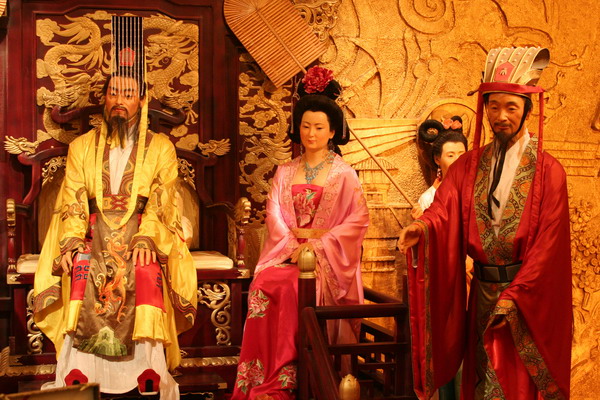
Every culture seems to have a legend of the most beautiful woman of the time. This sculture celebrates the most beautiful of all the women of the Tang Dynasty. She was a concubine of the emperor, and of exquisite beauty. In fact, all women in the Tang dynasty were unusual in that they enjoyed a very liberal and open-minded society during the normally very strict Chinese fuedal system.
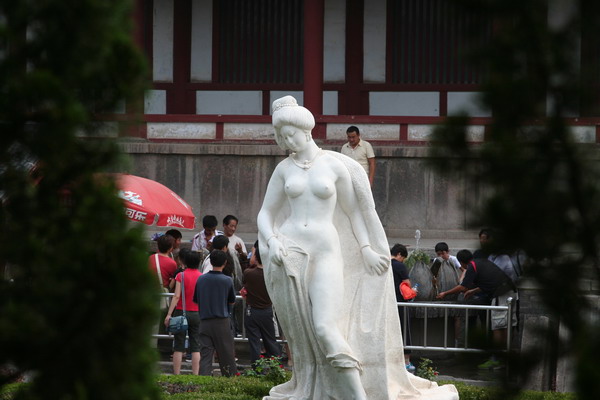
Now, in modern times, the hot springs served as an oasis for Chinese leader Chiang Kai-shek. As the Japanese invaded China in the 1930's the battle between Chinese Communists and Nationalists also raged. However, recognizing the immediate threat of the Japanese, Mao Zedong (communist leader) wanted to band with the nationalist to counter the invaders, then decide the domestic division. However, Chiang Kai-shek was not convinced, and felt that the domestic dispute should be handled first. That brings us to the hot springs. Here, Chiang was taken hostage by Mao and the communists, who had the help of 2 of Chiang's generals. However, Joseph Stalin felt it was not in the best interest of China, nor the region with the imminent Japanese threat, that Chiang be killed (as the communists wanted). So, perhaps through his influence, Chiang was kept alive and the two opposing sides were a United Front. This became known as the Xi'an Incident and is an important event in modern Chinese history.
Here's a view inside one of the rooms. There are many bullet holes still pockmarking the area.
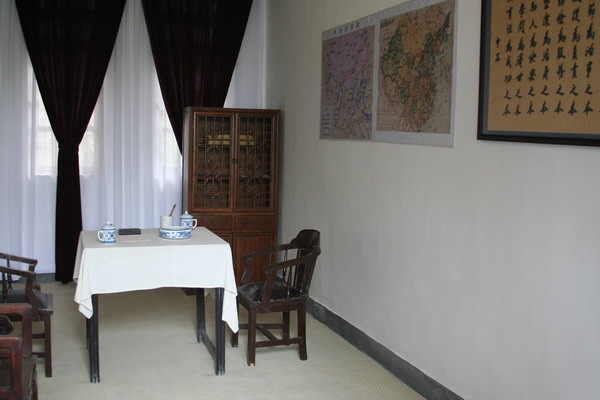
There was also this guy sitting around...
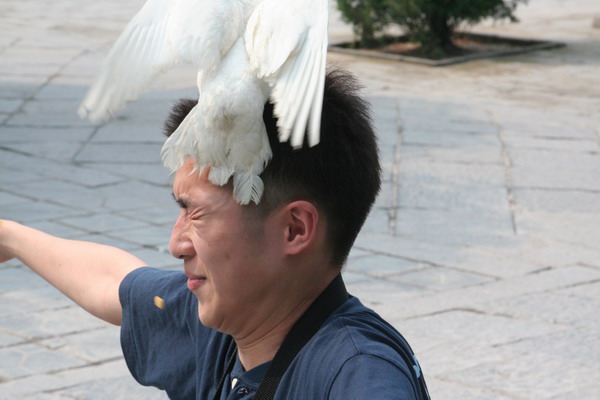
People there look like pretty much anyone else when they ride a bus...
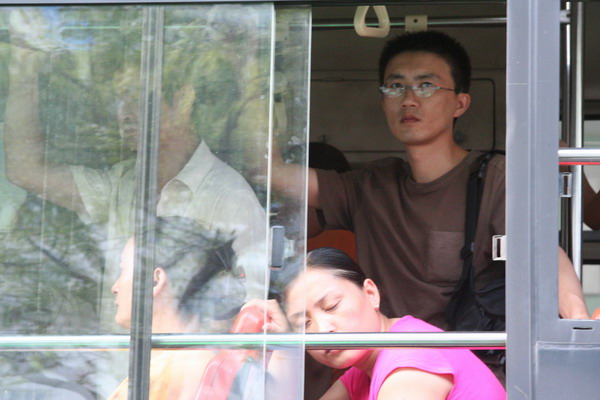
Some of the interesting tours we took were to a few local factories. While these places are mostly just tourist traps designed to suck you in and get you to buy over priced goods, it was still interesting to see the process. We visited jade, silk and Cloisonné.
Cloisonné is a uniquely Chinese art form that arose in the 13th century during the Yuan Dynasty involves shaping a piece of copper, then molding small pieces of filigree wire in intricate patterns. Finally, the spaces are filled in with enamel, baked in a kiln, sanded, and filled again, until the surface was brilliant color and smooth finish.
Jade is of course one of the minerals associated with China. We learned about the various ways it cut, polished, shaped into its final form and all about the different varieties and their relative value.
Finally, and the most interesting (because the process is much different than what we thought) was how silk is produced. Most significantly, it's not a bunch of live silk worms producing silk at will to make this fabric (at least not exactly). It and after the fact process.
The silk worms create their cocoon to transform from larvae to moth with a single thread. Once it's created by "domesticated" silkworms, the cocoon, with larvae still inside are boiled in water (to both loosen the construction and kill the larvae).
Sometimes, the cocoon contains 2 larvae and these twin cocoons produce a fine, but lower quality silk that is used for things like comforters. Here's what they look like.
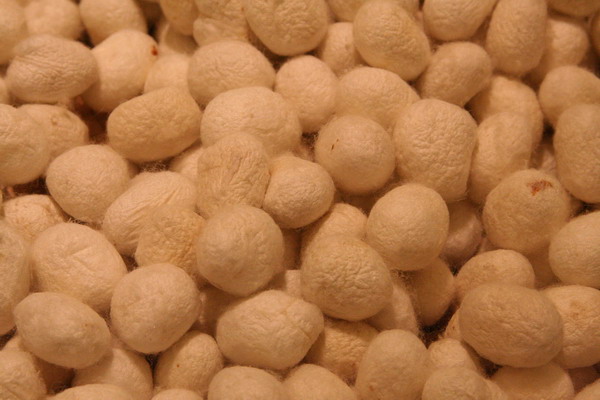
Don't you think Anna should be a professional hand model?? :-)
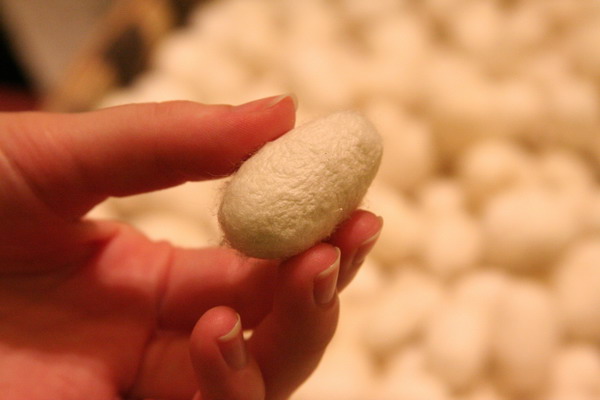
Here is one of the workers extracting the larvae (without breaking that single strand). Don't worry though, the larvae is also eaten (it's high in protein after all), so the whole process is very efficient.
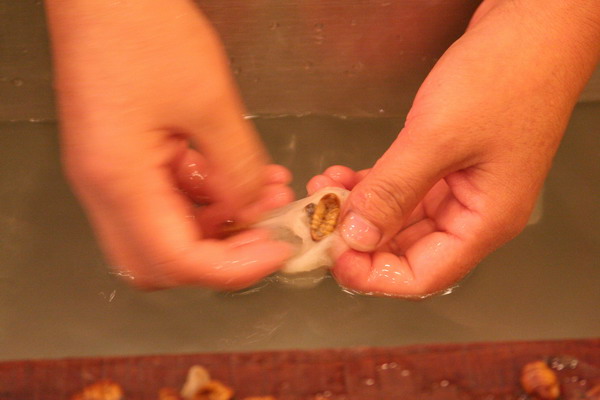
Once the material is washed and cleaned, it can be stretched very far, yet, the fiber remains very strong. You can see these women spreading out the material and a comforter can take up to 9,000 cocoons to make the large, thick ones.
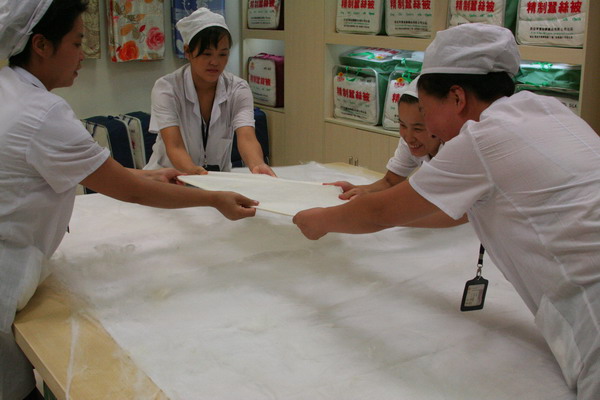
Back on the way into the city (note the city wall in the back ground), surprise, surprise, we found many bicyclists. It's interesting to note that bicycles in China cost about $25 new and $5 used, so it's certainly the most economical means of transportation (although the bikes may not be the "best" quality). Of course, with all the older vehicles and factories spewing tons of noxious gases, the air quality in both cities was VERY poor as smog was ever present.
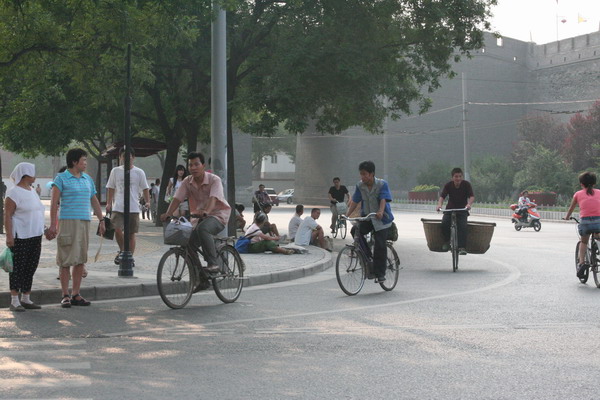
In keeping with our religious smorgasbord, we visited a muslim mosque. To get there, we wound our way through the Muslim market. It was a fascinating place and since it was only a 5 minute walk from our hotel, we decided to come back after dinner.
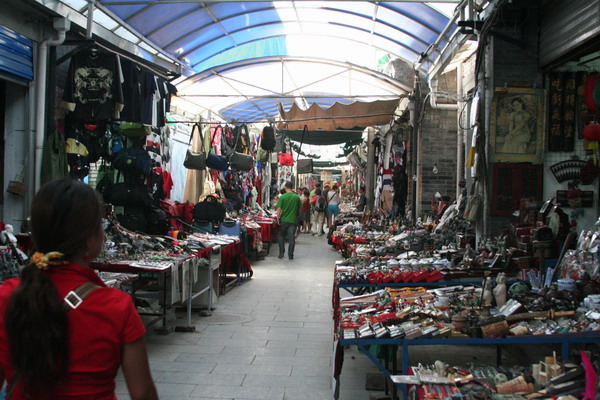
This is the inside of the mosque courtyards. Although, the actual sanctuary is only for muslims, the grounds were very pretty.
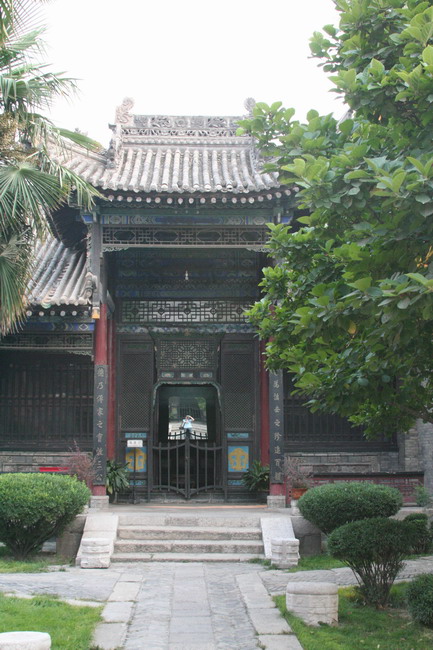
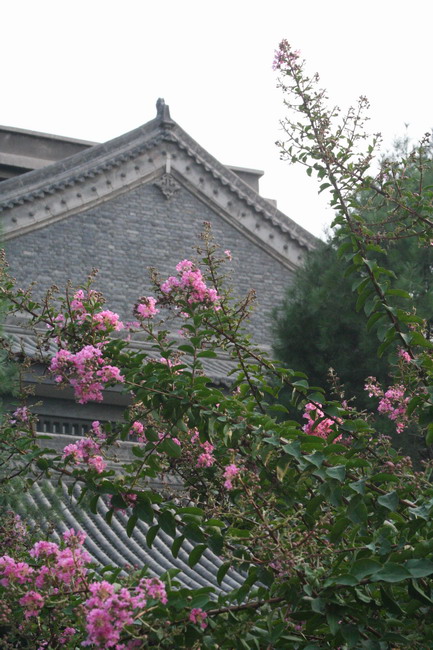
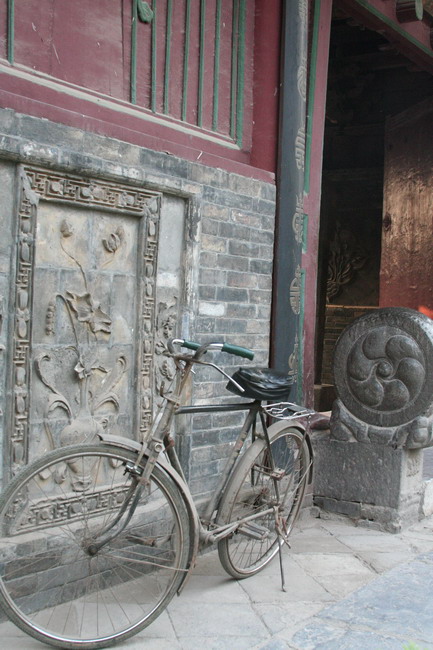
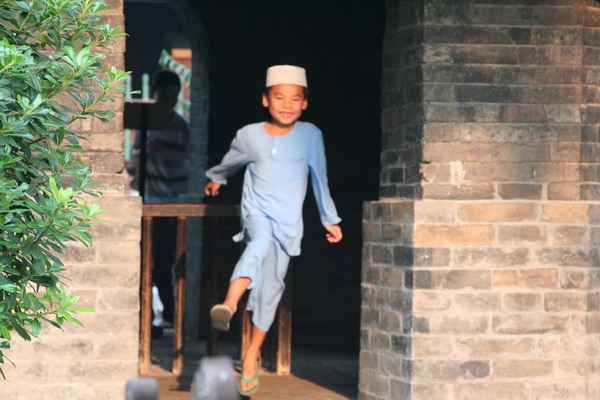
Back in the market, we found lots more very photogenic people. :-)
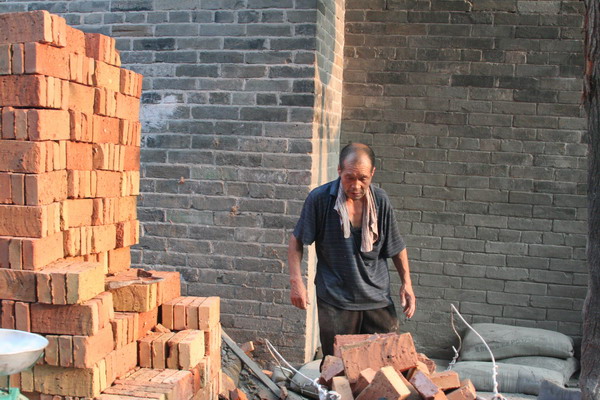
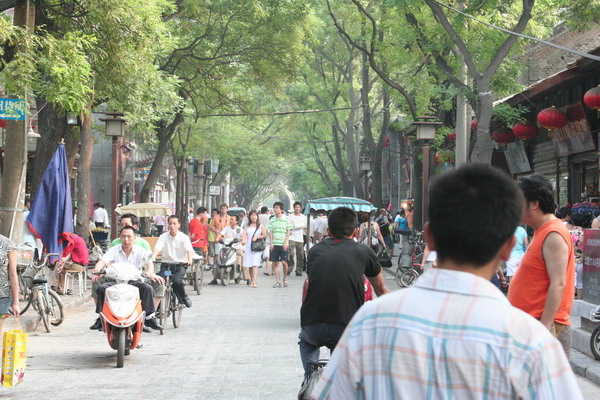
Dinner was being prepared all over the city...
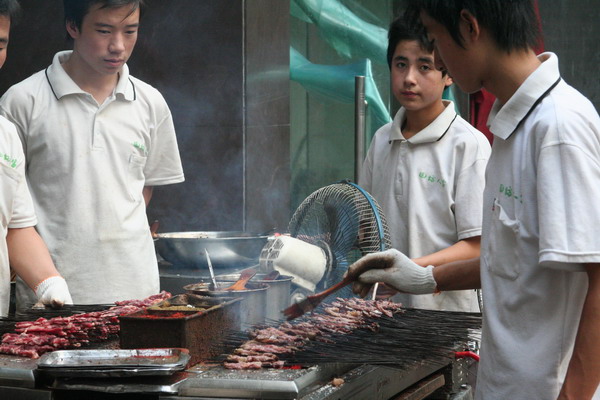
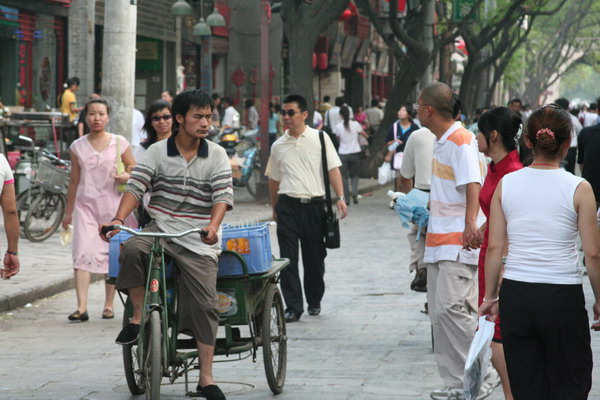
We found many people who were very active in their pursuit of recyclable goods (like plastic and aluminum bottles) by actively seeking people's empty containers. Here is one man doing just that, except it's in the waste already discarded.
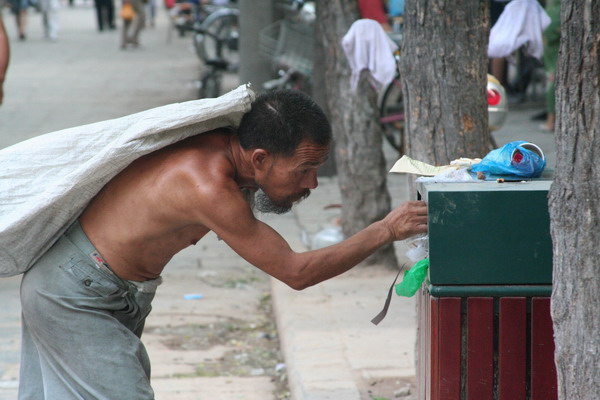
Of course, sanitation wasn't nearly as important there...
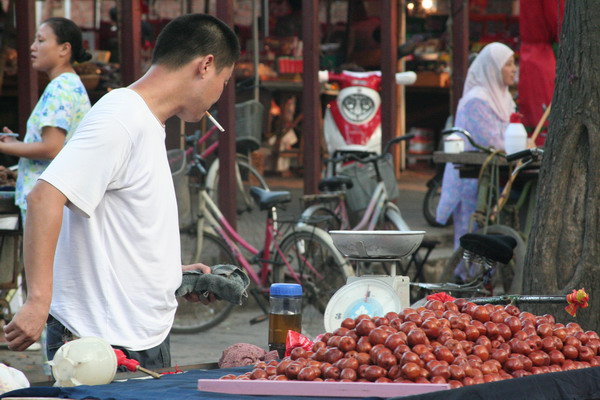
This is the view from just outside our hotel. It's of the Bell Tower, which is partnered down the road with its twin, the Drum Tower.
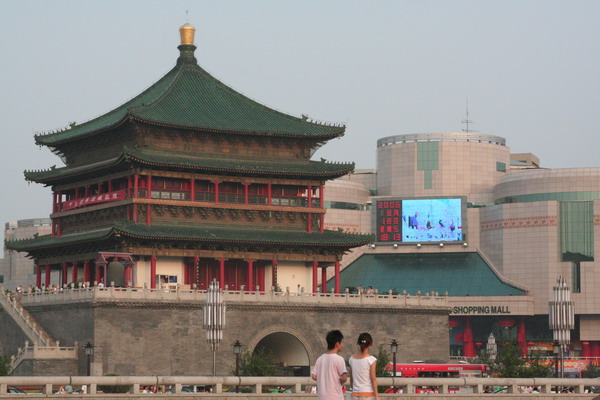
While we had a feast of dumplings, I thought these fish tanks were a unique feature of the restaurant.
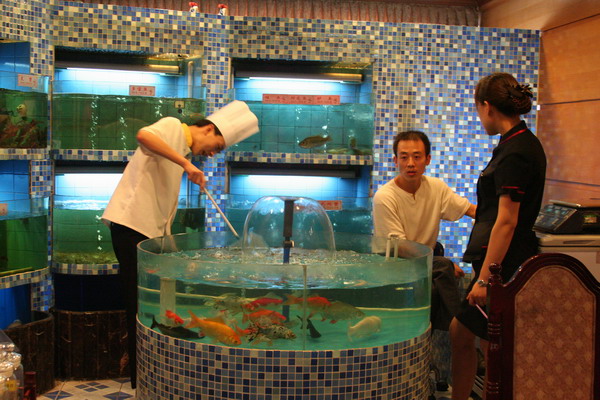
After our last dinner, Anna went for a foot massage, and I headed back to the market to capture some of the beautiful images I saw earlier.
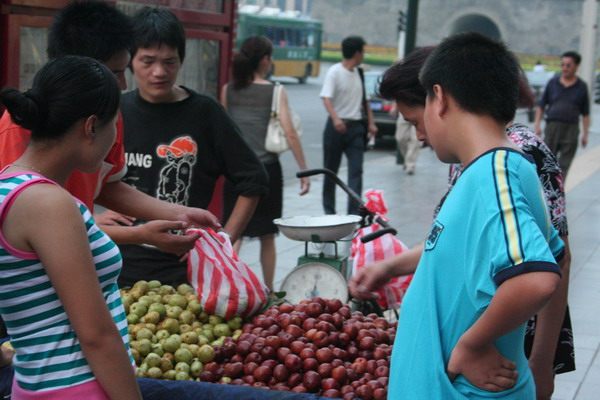
Every market we went to was an explosion of sight, sound and smell.
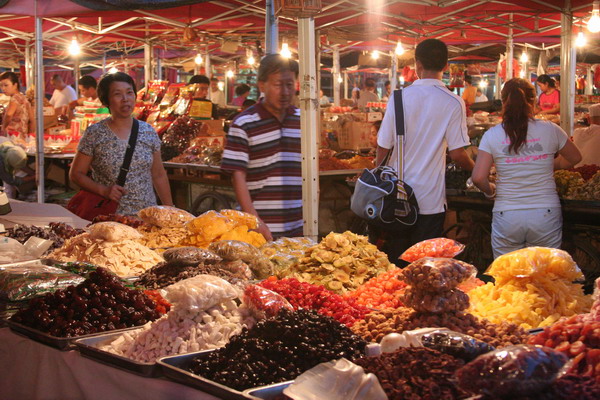
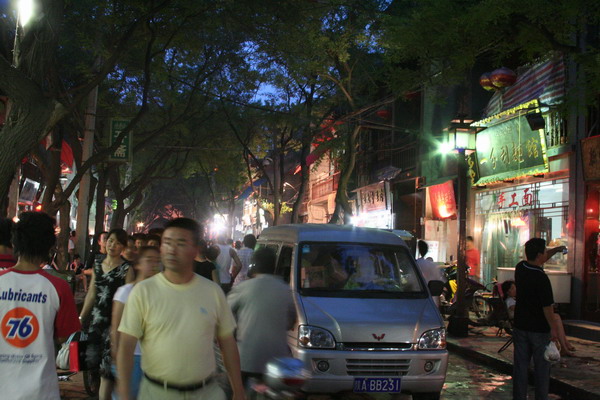

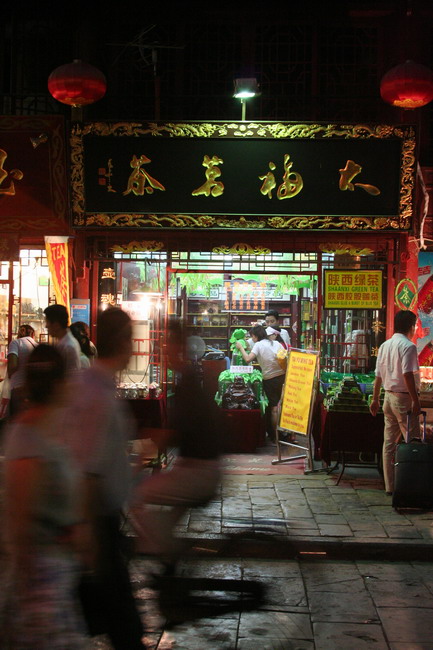
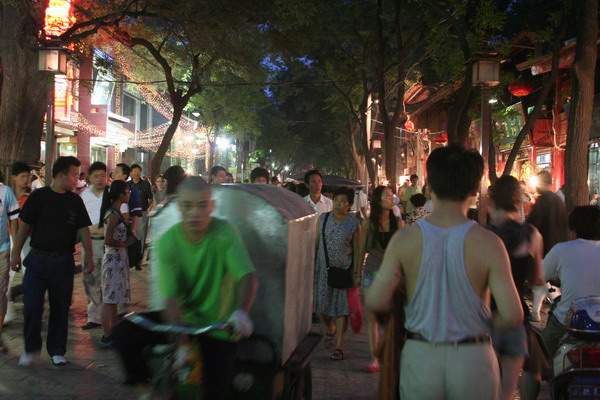
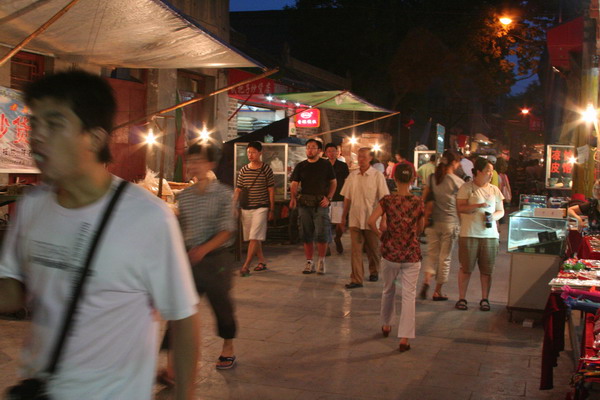
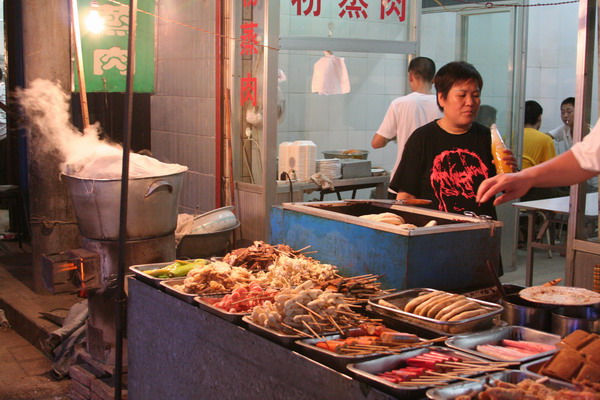
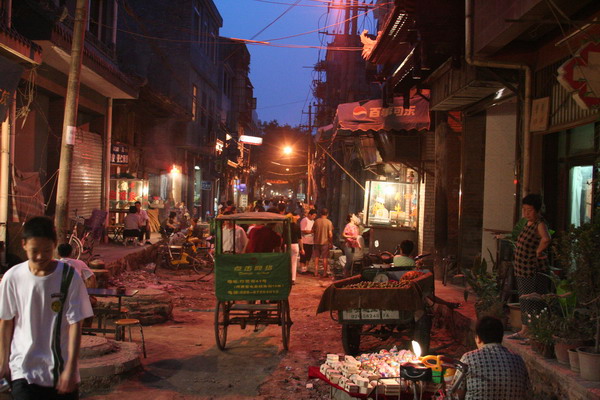
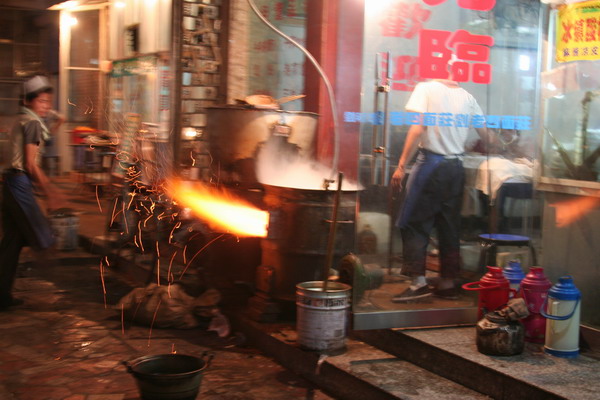
As we made our way back to the hotel, we found the Bell Tower ablaze in lights.
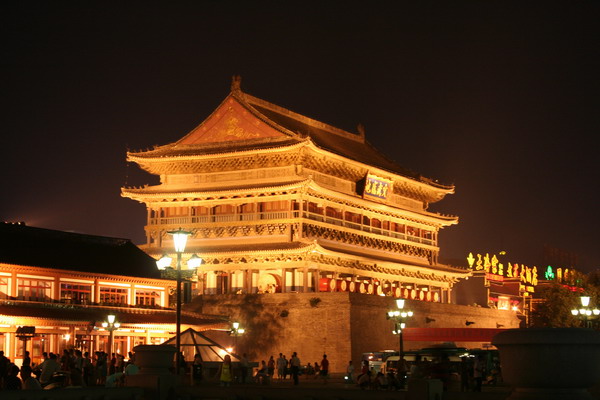
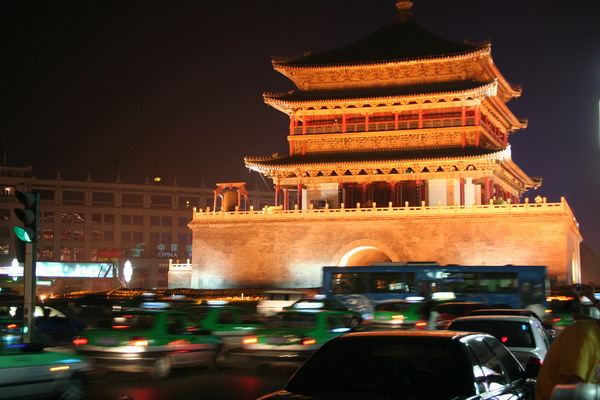
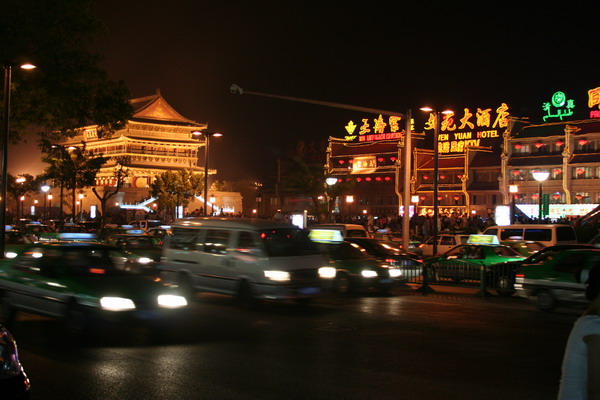
The next morning, we got up and started the long journey back to our home. All in all, it was another spectacular journey in the pursuit of adventure, history, and cultural understanding.
We found the people to be very kind and welcoming. The food to be typically very tasty. Goods were inexpensive. The history of the region surrounded us at every turn. It was a journey we'd recommend to anyone. Like any of our adventures, if you have any more questions about it, please don't hesitate to ask (leave a comment or write us an email at JimAnna02@yahoo.com).
So, until the next adventure.
--Jim
Posted by jim at August 21, 2006 09:41 PM